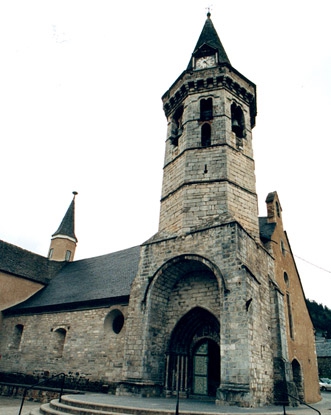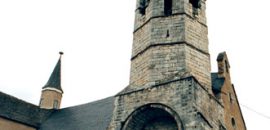Type: Church
Century: XIII-XV,XVIII
Architectural style: Romanesque-Gothic-Renaissance
Village: Vielha
Municipality: Vielha e Mijaran
The first thing that the visitor’s eye catches on gazing at the outside of the church of Sant Miquèu is its stunning belfry (16th Century), set on a facade in a narthex; the same architectural solution can be seen in the church of Sant Martin de Gausac.
The facade, which dates from the turn of the 13th and 14th Centuries, bears faithful witness to the artistic evolution of the Romanesque language towards the early Gothic forms (the same reference is to be found on the facade of the church of Sant Estèue de Betren); it is structured on five decreasing arches which illustrate different biblical episodes on the basis of anthropomorphic sculptural elements.Before entering the church the visitor’s eye will be caught by the ancient tympanum that decorates the original Romanesque facade and which is now embedded in the west wall next to the entrance door; there is also the typical representation of the Romanesque Christ Crucified, wearing a knee-length tunic (perizonium), and in a frontal and prone position. Once inside the religious building, we come upon the striking baptismal font with an iconography of vegetal motifs sculpted in relief, a very common trait in 13th-Century Aran valley fonts.
The Gothic altarpiece which decorates the central apse, attributed to the Master of Vielha, stands out at the back of the nave. There is however no doubt that the most emblematic piece of the church of Sant Miquèu is a Romanesque sculpture of Christ (Crist de Mijaran) which formed part of a greater sculptural ensemble, the fruit of the mature period of the workshop of Erill-la-Vall, and which is one of the most paradigmatic pieces of 12th-Century Romanesque sculpture.










